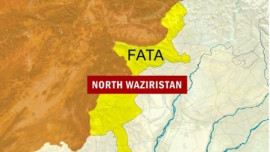It was the turn of the 19th Century when Britain and France were slogging it out, not only in Europe and the Mediterranean, but also on the shores of Africa.
It wasn’t going very well for the Limeys, who had the bad luck of facing the elite armies of none other than Napoleon Bonaparte himself. Finally, after several reversals, the Brits finally had their moment in the sun on the shores of Egypt.
The ‘gift of the Nile’ proved to be a game changer for the British who presented the French their first major battlefield defeat in a long, long time.
The British crown was so pleased at this long-awaited victory over their frog-eating rivals that, in the year 1802, the emblem of the ‘Sphinx’ was conferred upon the regiments “that helped to defeat Napoleon’s Army in Egypt in the previous year” as a battle honour. Among these honoured regiments were the ‘28th (North Gloucestershire) Regiment of Foot’ and the ‘24th Regiment of Foot’. The honour would be carried by them far and wide across the globe as the British Empire continued to expand and expand until it, quite literally, spanned the globe.
With garrisons needed in just about every continent, regiments began to be restructured, reorganised and renamed, changing not just their location, but also their names and identification numbers.
The end result was that many of today’s British Regiments and batteries trace their lineage to the ones that fought in Egypt that fateful season and still carry the Sphinx either as a battle honour or a title, in some form. Here’s where it starts to get interesting...
Around the same time in a part of the world far removed from the Napoleonic wars a very different drama was unfolding. Both the nomadic and settled populations of Balochistan were experiencing a horrific predicament. It began with stray goats and cattle going missing.
Then, people began to disappear with no apparent cause or explanation. The young, the old, men and women, lonely travellers and shepherds alike fell prey to this unknown scourge. Even the newly dead were not safe and their bodies were dug up and seemingly devoured. Sometimes, mauled and mutilated bodies and crushed bones were discovered, at other times there was no trace at all. Clearly a beast, nay, a monster was preying on the living and dead alike. Some claimed to have seen it, they said that it walked on two legs and sometimes even ran on all four. It was huge and menacing and had a roar that would stop a heart from beating. The locals gave it a name that, in retrospect, doesn’t sound very menacing.
They called it the “mum” and despite its somewhat cuddly name, bone chilling stories of its boundless hunger kept circulating and still exist in oral traditions. Even as recently as the 1980s, as a child I remember my own mum threatening me with the possible arrival of this other “mum” whenever I used to be mischievous. Oblivious to the details of the Balochi version, I used to brush aside the possibility of another mum being more frightening than my own mum, when she really wanted to be.
Here’s where these two tales intersect...
Back in the days of the British Raj, Quetta, the current capital of Balochistan, was a beautiful little town. It was the western most cantonment of British India and provided easy access to Afghanistan as the border was much closer as compared to that of today. In fact, the border kept shifting until the boundary commission fixed one permanently, in the shape of the Durand Line. The beautifully constructed colonial buildings, the cherry blossoms and the snowfalls of Quetta earned it the nickname of ‘Little London’. With the high-stakes geopolitical drama, known as “the Great Game” going on, both the Russian and the British empires had their eyes set on Afghanistan. More and more British regiments were being allocated to the Anglo-Afghan wars, among them the elite soldiers who had beaten ol’ Boney back in Egypt. They marched proudly into Afghanistan carrying the Sphinx insignia, but sadly for them, this was no Egypt. The Anglo-Afghan wars proved to be very costly for the British and their men were being slaughtered by the hundreds. Some of the dead from Afghanistan were eventually brought to Quetta for burial and a memorial was erected to honour them. And what else to guard the monument, than the insignia of their parent regiment — a relic of their past glory to crown their fall. The Sphinx! With the construction of this stone lion with the head of a human, the locals could finally put a face to their hitherto faceless terror. The Egyptian sphinx was now the Baloch Mum.
Interestingly, the legend and the statue jelled together very well. Legend had it that the Quetta Mum was a female of the variety that had been left behind when others of her species moved on due to increasing human encroachments.
It was said that she came to life during the nights and hunted for prey, which she used to take up to a cave on the Murdar Ghar peak in the hills behind the cantonment area. This fit perfectly with the fact that the graveyard sphinx sat as still as, well, a statue during the day. Who knew what it got up to during the night? Such was it’s notoriety that even in post-partition Quetta, much of the local population avoided passing alone at night along the Baleli Road where the “Gora” qabrastan (Christian Cemetery) is situated.
However, it was this very notoriety that spelled its unfortunate demise. In the 1990s, the statue was smashed during a protest against the destruction of the Babri Masjid. An enraged mob decided to take revenge on the poor Mum for preying on their ancestors for all those centuries.
Scientists can ponder all they want if the actual bone-crushing predator with a predilection for digging up graves was a striped hyena or a group of hungry black bears waking up from their hibernation. Either of these could be the monsters that chose to target easier and slow-moving prey like humans and cattle as opposed to the fast moving and cliff-climbing wild goats and sheep.
It is interesting to note that by the time of the destruction of the Quetta Mum, wildlife around the city had dwindled to extremely small numbers and thus, cases of the Mum preying on humans/cattle had virtually come to a stop. For many a believer, this only serves to provide empirical evidence of the Sphinx’s guilt. However, with the passage of time, and no tangible reminder, the legend of the Quetta Mum is fast diminishing from public memory.
Still, I suggest that on a chilly Quetta night, if you are feeling romantic and wish to take a walk with your better-half along the Baleli Road by the Christian Cemetery, do take care — the Mum might be watching you!
Published in The Express Tribune, Sunday Magazine, April 15th, 2012.
COMMENTS (11)
Comments are moderated and generally will be posted if they are on-topic and not abusive.
For more information, please see our Comments FAQ



1731655243-0/BeFunky-collage-(61)1731655243-0-165x106.webp)


1731656720-0/Copy-of-Untitled-(44)1731656720-0-270x192.webp)
1731651715-0/Express-Tribune-(1)1731651715-0-270x192.webp)









Really a good mix of two seperate historic events . Great piece of work
just for the record there were no baloch in quetta before 1980 the punjabis settelers came here in 1930s and urdu speaking in 1940s before that it was pashtun hazara city so it is a pashtun folk lore
nice stuff.. never heard of the "mum" though
Why do we need to destroy things? Preserve, learn and transfer to next generations...
Great job. Really enjoyed this article.
This is a nice piece of history mixed with folk lore and wit. I LIKES IT!
Amazing piece...good job as ever Adil!
Great Story Adil... I really enjoyed reading it. However I felt sad for the Quetta Mum when it's statue was demolished by angry mobs. It shared the fate of the Buddha statues at Bamian. I hope we grow up enough some day to be able to safeguard our national treasures.
A.
This piece would not have been possible without the help of Mr. Kaiser Tufail who was kind enough to have some important aspects of the piece verified through his contacts.
Oh wow that does bring old memories I have heard similar stories when I lived in Quetta, it is good to know that it was just a myth and nothing seriously real. thanks for sharing the insights
Certainly interesting!